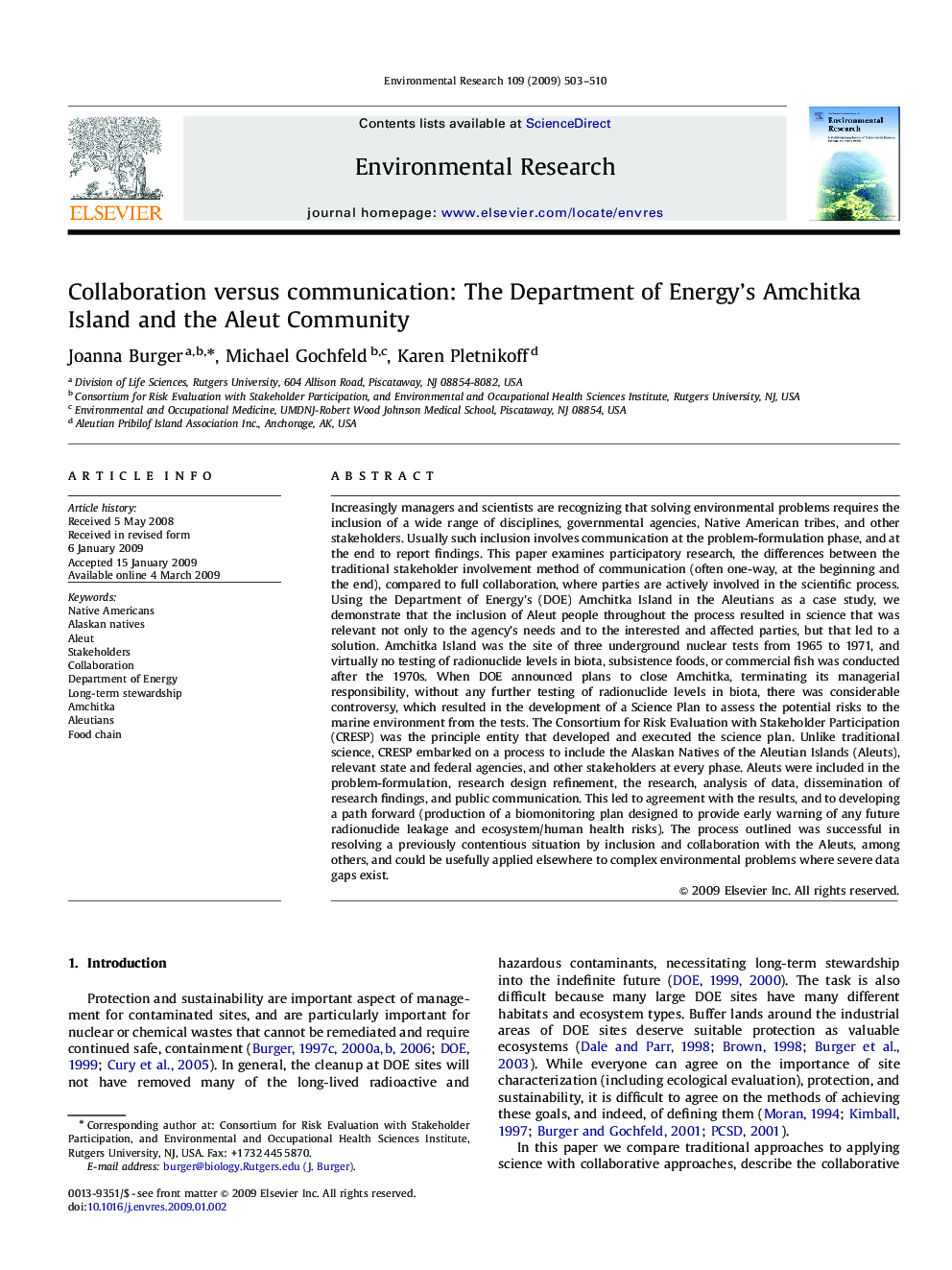| کد مقاله | کد نشریه | سال انتشار | مقاله انگلیسی | نسخه تمام متن |
|---|---|---|---|---|
| 6353467 | 1314437 | 2009 | 8 صفحه PDF | دانلود رایگان |
عنوان انگلیسی مقاله ISI
Collaboration versus communication: The Department of Energy's Amchitka Island and the Aleut Community
دانلود مقاله + سفارش ترجمه
دانلود مقاله ISI انگلیسی
رایگان برای ایرانیان
کلمات کلیدی
موضوعات مرتبط
علوم زیستی و بیوفناوری
علوم محیط زیست
بهداشت، سم شناسی و جهش زایی
پیش نمایش صفحه اول مقاله

چکیده انگلیسی
Increasingly managers and scientists are recognizing that solving environmental problems requires the inclusion of a wide range of disciplines, governmental agencies, Native American tribes, and other stakeholders. Usually such inclusion involves communication at the problem-formulation phase, and at the end to report findings. This paper examines participatory research, the differences between the traditional stakeholder involvement method of communication (often one-way, at the beginning and the end), compared to full collaboration, where parties are actively involved in the scientific process. Using the Department of Energy's (DOE) Amchitka Island in the Aleutians as a case study, we demonstrate that the inclusion of Aleut people throughout the process resulted in science that was relevant not only to the agency's needs and to the interested and affected parties, but that led to a solution. Amchitka Island was the site of three underground nuclear tests from 1965 to 1971, and virtually no testing of radionuclide levels in biota, subsistence foods, or commercial fish was conducted after the 1970s. When DOE announced plans to close Amchitka, terminating its managerial responsibility, without any further testing of radionuclide levels in biota, there was considerable controversy, which resulted in the development of a Science Plan to assess the potential risks to the marine environment from the tests. The Consortium for Risk Evaluation with Stakeholder Participation (CRESP) was the principle entity that developed and executed the science plan. Unlike traditional science, CRESP embarked on a process to include the Alaskan Natives of the Aleutian Islands (Aleuts), relevant state and federal agencies, and other stakeholders at every phase. Aleuts were included in the problem-formulation, research design refinement, the research, analysis of data, dissemination of research findings, and public communication. This led to agreement with the results, and to developing a path forward (production of a biomonitoring plan designed to provide early warning of any future radionuclide leakage and ecosystem/human health risks). The process outlined was successful in resolving a previously contentious situation by inclusion and collaboration with the Aleuts, among others, and could be usefully applied elsewhere to complex environmental problems where severe data gaps exist.
ناشر
Database: Elsevier - ScienceDirect (ساینس دایرکت)
Journal: Environmental Research - Volume 109, Issue 4, May 2009, Pages 503-510
Journal: Environmental Research - Volume 109, Issue 4, May 2009, Pages 503-510
نویسندگان
Joanna Burger, Michael Gochfeld, Karen Pletnikoff,